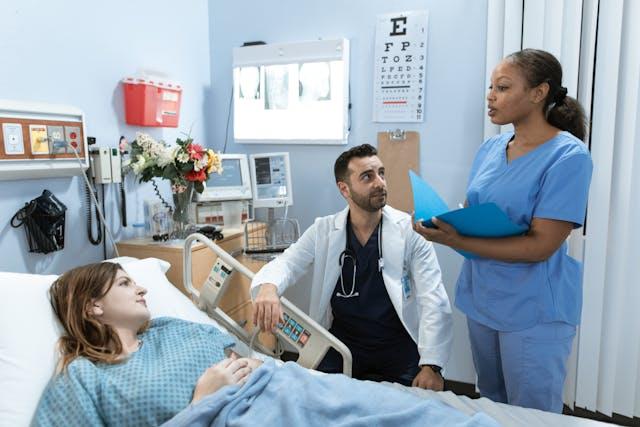
In the patient transportation industry, a few minutes of improvement can easily translate to better patient outcomes. This is even more true if you’re viewing things from a macro perspective. When you’re assessing thousands of trips a month, bringing down response times by even just a few seconds will almost certainly mean more lives saved. It’s no wonder then that healthcare providers put a lot of resources in training transport crews and giving them the equipment they need to efficiently move patients.
However, today’s ongoing shortage of emergency medical services (EMS) workers is straining the current patient transport system. To continue optimizing inter-facility transfers, hospitals and other health facilities must adopt a hospital patient transfer scheduling solution with the right capabilities. If you’re shopping around for a patient transfer platform for your healthcare organization, don’t shortlist a system unless it has these critical features:
1. Real-Time Status Updates
For faster turnarounds, dispatchers need to be able to track crew progress in real time so that they can make optimal crew assignment decisions. For that reason, shortlisted solutions must provide real-time updates on the status of patient transfers. Notifications should also be immediately available on the tool to other members of the network so that they can anticipate their next actions.
2. Automated Scheduling
Your shortlisted patient transfer solutions must also be able to automate the scheduling process in as many areas as possible. In particular, the processes involved in linking hospitals and transport providers must require minimal manual coordination to reduce errors and maximize crew availability. In addition, users must be able to set and run automations without the need for any coding knowledge or other advanced training.
3. Streamlined Yet Secure Data and Communication
It’s not enough for your solution to be fast, it has to comply with HIPAA (Health Insurance Portability and Accountability Act of 1996) as well. HIPAA-compliant communication data storage and channels are a non-negotiable requirement for transfer schedulers, given the sensitive nature of patient data and the legal ramifications that could follow from using non-compliant software. Never consider any patient transfer scheduling solution that does not provide the needed levels of confidentiality throughout the transfer process.
4. Integration with EHR Systems
The system you adopt must seamlessly integrate with relevant Electronic Health Record (EHR) systems right out of the box, without the need for any third-party software or expensive fixes. Smoother access to these systems will permit staff to quickly access patient information, streamline documentation, and ensure scheduling accuracy with no unnecessary friction.
5. Dynamic/Tiered Provider Selection
Your scheduler should allow you to preset policies so that requests are automatically handled by a preferred set of providers. Furthermore, the system should allow for automatic assignments to other designated providers if the first tier is fully booked. This feature can be used to optimize crew allocation and transport availability, which guarantees timely patient transfers, even during peak demand.
User Friendly Interface
Whichever solution you choose, the design should offer a fully-featured but still user-friendly interface. The interface must be simple enough that even first-time users can make bookings with minimal guidance. Try before you buy and look for workflow customizations and other time-saving features that also reduce errors and administrative burdens.
Automated PCS Form Generation
Manually filling out Patient Care Summary (PCS) forms can use up precious minutes. For that reason, your chosen solution must enable automatically generated PCS forms based on patient and transport details. This feature not only saves crews time on the road but also simplifies billing processes and ensures instant compliance with regulatory requirements.
Custom Reporting
Custom report generation is now a necessity, given the variety of stakeholders now present in the patient transport sector. Being able to shape reports to cater to different audiences can result in clearer communication and timelier actions that save lives.
9. Scalability
Scalable transfer scheduling solutions are preferable given that patient volumes can spike without warning. The ability to accommodate fluctuations in patient volume and transport demand should result in more lives saved, even in challenging circumstances.
10. Business Intelligence
While the ability to track the details of crew performance is necessary for day-to-day efficiency, the ability to monitor wider-scale key performance indicators is just as important. Access to easy-to-use business intelligence tools should allow healthcare organization planners to better serve their districts and prevent transport crews from becoming prematurely burnt out.
Unlocking Better Outcomes Through Better Patient Transfers
Together, these requisite capabilities can provide your healthcare organization with more capacity to maximize available resources while also improving patient outcomes. With the manpower challenges faced by the healthcare system today, these solutions should be seen not as a luxury but as necessary infrastructure in modern patient transportation. Through streamlined patient transfer processes, hospitals and health facilities can further reduce costs while also paving the way for better patient and health worker experiences across the entire healthcare continuum.
Disclaimer: This post was provided by a guest contributor. Coherent Market Insights does not endorse any products or services mentioned unless explicitly stated.





